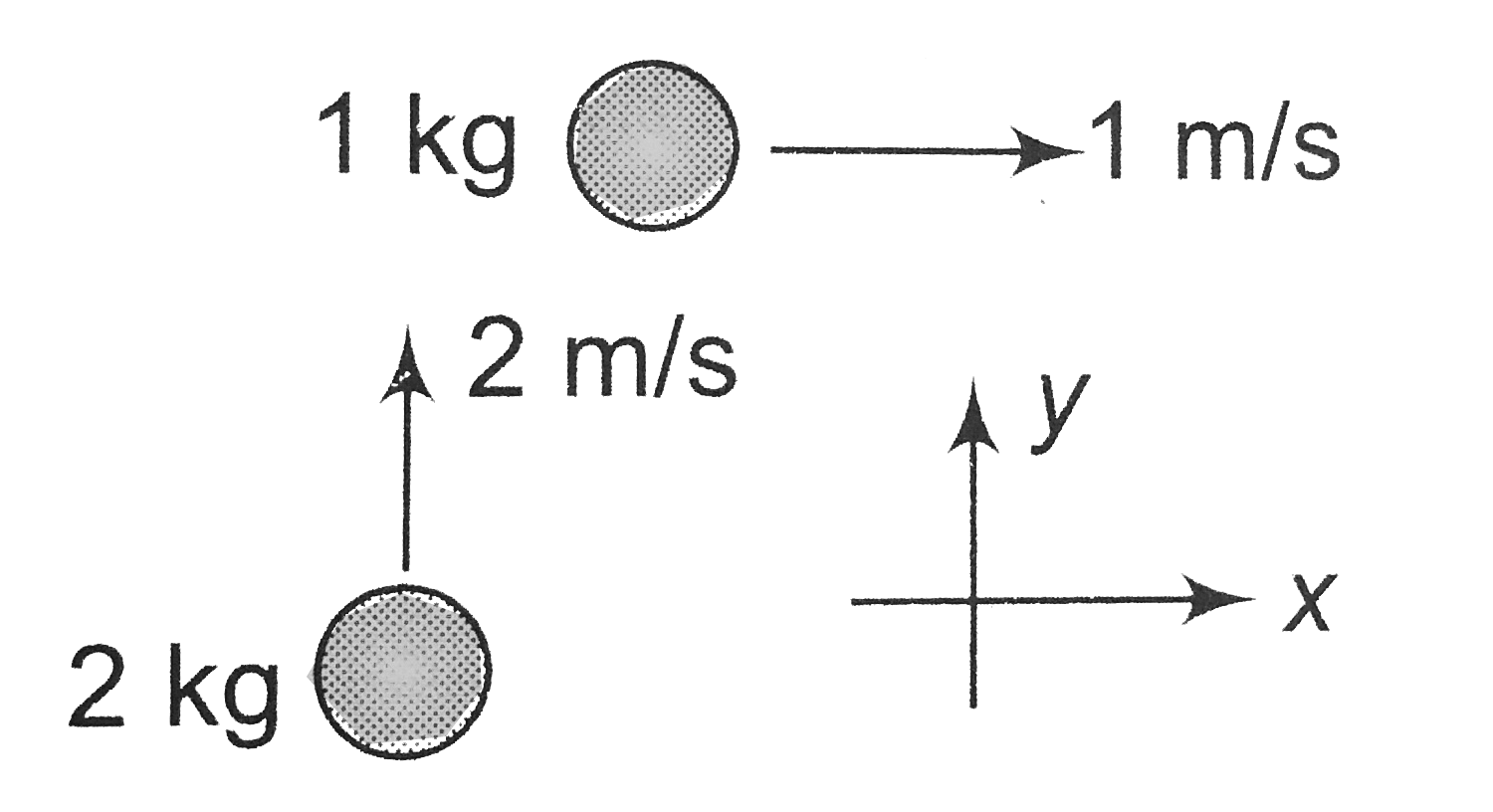Two bodies having same mass 40 kg are moving in opposite direction. One with a velocity of 10 m/s and the other will 7m/s. if they collide nd move as one body, the velocity of the combination is
10 m/s
7 m/s
3 m/s
1.5 m/s
The correct Answer is:D
By the conservation of momentum
40×10+(40)×(−7)=80×v⇒v=1.5m/s
Topper's Solved these Questions
- WORK , ENERGY , POWER AND COLLISIONBook:ERRORLESS Chapter:WORK , ENERGY , POWER AND COLLISIONExercise:Ordinary Thinking (Objective Questions) (Perfectly Inelastic Collision)
Explore 30 Videos
- WORK , ENERGY , POWER AND COLLISIONBook:ERRORLESS Chapter:WORK , ENERGY , POWER AND COLLISIONExercise:Critical Thinking (Objective Questions)
Explore 20 Videos
- WORK , ENERGY , POWER AND COLLISIONBook:ERRORLESS Chapter:WORK , ENERGY , POWER AND COLLISIONExercise:Ordinary Thinking (Objective Questions) (Power)
Explore 31 Videos
- WAVES AND SOUNDBook:ERRORLESS Chapter:WAVES AND SOUNDExercise:SET
Explore 25 Videos
- WORK, ENERGY, POWER & COLLISIONBook:ERRORLESS Chapter:WORK, ENERGY, POWER & COLLISIONExercise:Assertion
Explore 30 Videos
Similar Questions
A body of mass 1.5kg moving with a velocity of 10m/s encounters another body of mass 2.5kg moving in opposite direction with a velocity of 16m/s, and they stick to eachother. What is the velocity of combination?
View SolutionA body of mass 2kg moving with a velocity of 3m/sec towards left collides head-on with a body of mass 3kg moving in opposite direction with a velocity 2m/sec. After collision the two bodies stick together and move with a common velocity which is :
View Solution
Knowledge Check
A body of mass 3kg moving with a velocity of 4m/s towards left collides head on with a body of mass 4kg moving in opposite direction with a velocity of 3m/s. After collision the two bodies stick together and move with a common velocity which is
AzeroB12m/s towards leftC12m/s towards rightD127 m//s towards leftA body of mass 2 kg moving with a velocity of 3 m/sec collides head on with a body of mass 1 kg moving in opposite direction with a velocity of 4 m/sec. After collision, two bodies stick together and move with a common velocity which in m/sec is equal to
A1/4B1/3C2/3D3/4A body of mass 2 kg moving with a velocity of 3 m/sec collides head on with a body of mass 1 kg moving in opposite direction with a velocity of 4 m/sec. After collision, two bodies stick together and move with a common velocity which in m/sec is equal to
A1/4B1/3C2/3D3/4
Two bodies of masses 1kgand2kg are moving in two perpendicular direction with velocities 1m/sand2m/s as shown in figure. The velocity of the centre of mass (in magnitide) of the system will be :

View SolutionA ball weighing 2 kg and speed 6m/s collides with another ball of 4 kg moving in opposite direction with speed of 3m/s. They combine after the collision. The speed of this combined mass (in m/s) is :
View SolutionA ball weighing 2 kg and speed 6m/s collides with another ball of 4 kg moving in opposite direction with speed of 3m/s. They combine after the collision. The speed of this combined mass (in m/s) is :
View SolutionA body of mass 1kg is moving along a straight line with a velocity of 1m/s. The external force acting in the body is
View SolutionTwo particles of mass m and 2 m moving in opposite directions collide elastically with velocities v and 2v. Find their velocities after collision.
View Solution
